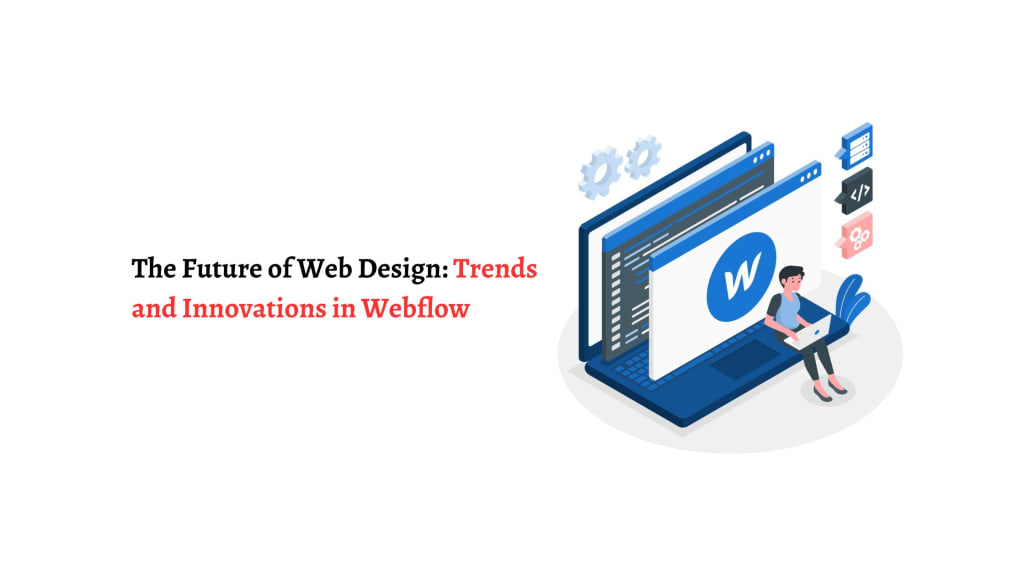The Future of Web Design: Trends and Innovations in Webflow
Web Design: Trends and Innovations in Webflow

Web design isn’t just evolving; instead, it’s going through a transformative journey that will surely change the future of web design. As we all know, modern-day web designs are no longer limited to building appealing pages but the ones that resonate with the audience and can keep them engaged for longer intervals. To make such customized web designs, choosing the right platform is important. Webflow is one such platform. If you need help with design, hire a professional Webflow development company. Furthermore, there are multiple trends that you can leverage to build a future-ready web design for your website and applications.
Key Trends in Webflow Development
- Visual Design Canvas
Webflow’s Visual Design Canvas transforms the way designers create for the web by offering an intuitive interface that allows for real-time visual editing. This canvas is packed with impressive features, including a responsive design, ensuring a seamless look and functionality across different devices. The responsive design aspect is not just about aesthetics; it’s about creating an accessible and user-friendly experience for all users, regardless of their device’s screen size.
The power of Webflow’s design canvas lies in its ability to adapt to various screen widths, reflowing content to fit the browser’s viewport. This adaptability eliminates the need for zooming and panning on smaller screens, which can detract from the user experience. The firm you hire for Webflow development services will utilize this capability of Webflow to build your website design.
By utilizing Webflow, one can avoid the pitfalls of fixed sizing and embrace fluid layouts that respond to the user’s environment. This approach is essential in a digital landscape where mobile browsing is increasingly prevalent. The layouts are fully responsive, which saves us the hassle of crafting separate versions for different screen sizes and provides clients with a realistic preview of their site’s functionality.
- Advanced Styling and Customization
Webflow’s advanced styling and customization capabilities empower designers to push the boundaries of web design without the need for extensive coding knowledge. Fine-grained control over design elements and the ability to inject custom code cater to both novice and advanced users. This flexibility is a game-changer for creating unique and personalized web experiences.
The visual drag-and-drop editor is a cornerstone of Webflow’s design customization, allowing for real-time adjustments and a hands-on approach to layout and styling. For those seeking even more personalization, Webflow’s built-in HTML templating and component-based design facilitate content reuse and maintainability.
Webflow’s approach to customization not only enhances the visual appeal of websites but also ensures that they are highly functional and tailored to specific user needs.
With Webflow, the possibilities for product page customization are vast, offering a range of options to showcase products in the best light. The platform’s emphasis on innovation, quality, and customer satisfaction echoes the personalized strategies that set businesses apart.
- Seamless CMS Integration and Dynamic Content
Webflow’s CMS integration is a game-changer for web designers and content managers alike. It offers a flexible platform for various devices and allows users to add custom code and dynamic content for maximum customization flexibility. This decoupling of content and presentation enables businesses to deliver content seamlessly across different platforms and devices without needing to modify the content itself.
Headless CMS Architecture is becoming an increasingly popular trend as it offers scalability and enhanced security. The architecture separates the CMS from the front-end display layer, meaning businesses can manage their content in one place and have it appear across multiple channels without additional effort.
Also read Why Should You Choose Webflow For Website Development?
- Real-time Collaboration and Productivity Tools
Webflow’s real-time collaboration tools have transformed the way teams interact and design together. Dynamic content and live editing capabilities ensure that every team member can contribute to the project instantaneously, eliminating delays and fostering a more cohesive design process. With the introduction of these tools, Webflow is constantly innovating to provide easy access to new technology, ensuring that developers offering Webflow development services are equipped with the latest features to create appealing websites.
Conclusion
The concept and approach that was used to build web designs is now changing. As customers demand more personalization, businesses need to build designs that are more resonating and connected. To do so, they require a platform such as Webflow to build a fully customizable web design. Hire a professional Webflow development company to build a unique web design that aligns with your requirements.
About the Creator
Enjoyed the story? Support the Creator.
Subscribe for free to receive all their stories in your feed. You could also pledge your support or give them a one-off tip, letting them know you appreciate their work.





Comments
There are no comments for this story
Be the first to respond and start the conversation.